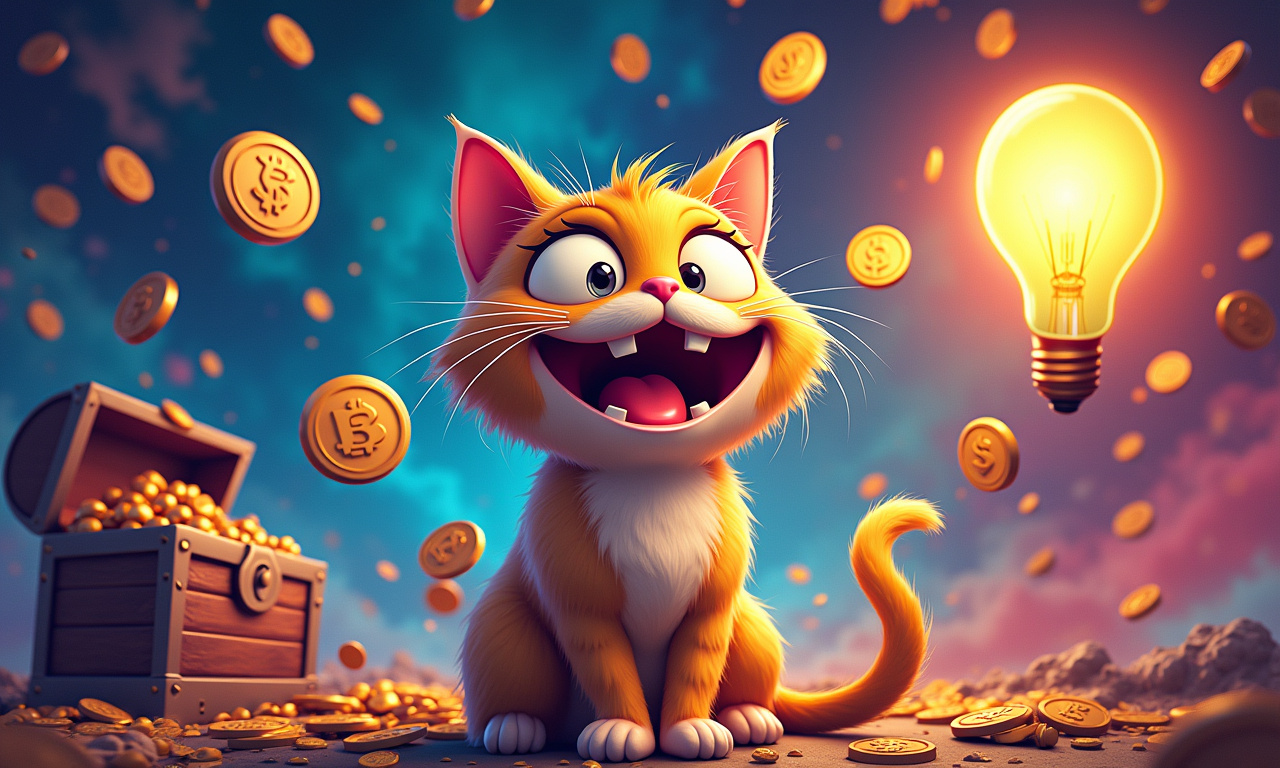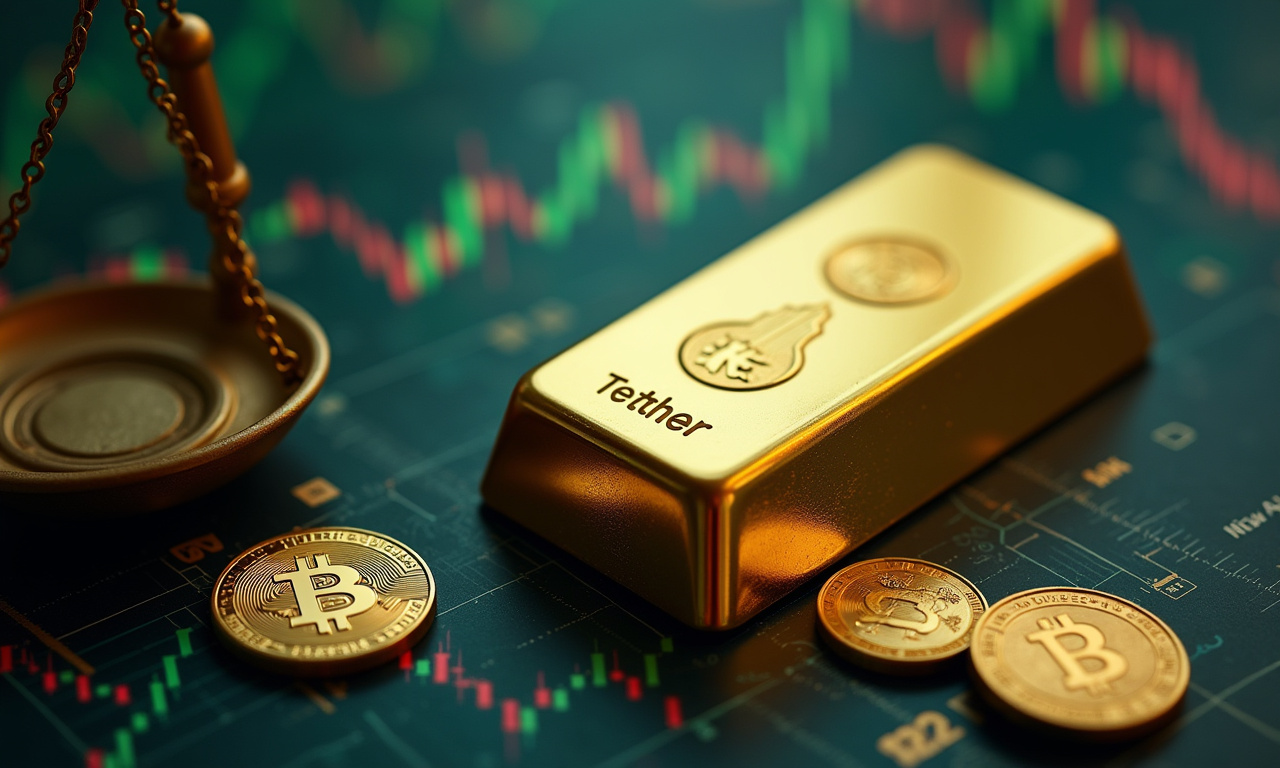POPCAT's Surge: Is It Greed or Genius Fueling the Meme Coin Craze?

I was introduced to Sarah at an Arlington coffee shop last week. A 30-something graphic designer, she breathlessly explained how she’d invested part of her life savings into POPCAT. She hadn’t been seduced by the tech or a moonshot vision. Rather, she jumped on the bandwagon because everyone else was, and she didn’t want to be left out. She shared screenshots of her portfolio, a beautiful tapestry of green and red, though leaning heavily toward red. Her rationale? Unadulterated FOMO, Fear Of Missing Out. Is that genius? Or something else entirely?
Market's Mood Swing: Fear to Greed?
The crypto market is undeniably frothy. Bitcoin dancing with unachievable peaks, Ethereum following behind like a little shadow, and then … the meme coins. POPCAT, specifically, caught my eye. Why? Because it's absurd. A digital feline with a mouth that literally pops, somehow wielding billions of dollars in real-world capital. Now, institutions are pouring money into Bitcoin ETFs – ARK 21Shares ETF just recorded a whopping $116.1 million inflow last week. Now, that's supposedly the smart money. Where do the retail investors—the Sarahs of the world—chasing the next Doge or Shiba Inu fit in?
As of this writing, the Fear & Greed Index is at 52, or “Greed.” This is a major reversal from the “extreme fear” we were all feeling as recently as last fall. This change is further from Bitcoin’s scope. It reveals a desperate search for yield and a dangerous trend to speculate on any asset that could produce extreme fortunes. Or is this just a common sense response to economic uncertainty? Like inflation, this seems to be driving people into flight assets as the dollar goes soft and equity markets get jittery. Have we truly succumbed to the siren call of easy money? This has the feel of social media hype and a mass delusion propelling us.
POPCAT: Undervalued Gem or Fool's Gold?
According to the “experts” (and I use that term very loosely in the world of meme coins) POPCAT is “undervalued.” Having bottomed out around $0.21, REC has been on the rebound it would seem, retesting that $0.37-$0.38 resistance zone. Currently trading just above $0.36, they suggest that a breakout would retest at a previous resistance of $0.71. Even a shot at $1. If you truly think that, I’ve got a fine span across the East River to sell you.
Look, I get the appeal. The lure of 26% returns in one day is an irresistible drug. The support levels, the potential targets, the "increased trading volume and community activity" – it all sounds so…scientific. Let’s face it, none of this is rocket science. It's gambling, plain and simple. Even just looking at the charts. The charts are tea leaves, the “analysis” is astrology for bros.
Oh, they're always the best, right? Non-custodial, multi-chain, early access, cheaper fees, staking rewards up to 128% APY (for presale obviously!). They're selling shovels in a gold rush, and you're the gold. And the airdrop? Free tokens for engagement? It’s all just a marketing ploy, dressed up as benevolence.
The Ethical Minefield of Meme Coins
Here's where it gets uncomfortable. This is not a matter of individual investors simply making poor decisions. It's about the system that enables them. The influencers are STILL doing this racket, and STILL pushing these coins. Exchanges are rushing to list them and not doing their due diligence, and developers don’t always have the noblest of intentions.
What happens when the music stops? When the meme dies, and the “community” goes on to the next shiny object? Who's left holding the bag? As always, the promise of quick riches is what attracts the most vulnerable investors. These people are often the ones who can least afford to lose their money, motivated by the panic of being left behind.
Is POPCAT merely a colorful joke, just a little amusement in a world gone mad? If so, might it be a sign of something more acutely wrong? Perhaps it’s just character in the aggregate and our willingness to fall for any scheme we want to believe in that offers a fast track to riches.
The truth though, I would wager, is found somewhere in the middle. There’s nothing to be embarrassed about when it comes to the genius behind the meme coin phenomenon, a clever exploitation of market psychology and social media dynamics. There's also a darkness to it, a potential for exploitation and harm that we can't afford to ignore.
So sorry, Sarah, but I hope your POPCAT investment pays off. I truly do. But it’s very important to understand that this is a gamble. It doesn’t promise you financial independence, nor your family, heck, not even your dogs! And perhaps, just perhaps, think about branching out into something a tad less…feline.

Ava Thompson
Blockchain Market Psychology Editor
Ava Thompson explores blockchain and market psychology through an evidence-based yet human-focused lens. She bridges strategic thinking with direct, nuanced communication, and her work features a balance of in-depth analysis and relatable storytelling. Outside the newsroom, Ava is an avid urban gardener and street art enthusiast.
Related News

Altcoin Apocalypse? Why Bitcoin's Dominance Surge Should Terrify You
Forget the Lambo dreams. Forget the moon shots. So in the current state of things if you are a big holder of altcoins, you should be scared to death. Bitcoin’s recent dominance surge isn’t just a momentary spike, it’s a flashing red warning light. This does not indicate positive fundamentals...

Tether Gold (XAUt) Risks You Can't Ignore, and How to Navigate Them
XAUt, Tether’s gold-backed token, offers the glitter of gold with the convenience of crypto. Sounds great, right? Maybe. In the information age, the hunt for treasure has changed entirely. We no longer protect our treasures with maps and shovels, but rather blockchains and private keys. Before you begin this tech-driven...

Tether Gold (XAUt) is the Future of Gold Investment, Here's Why
Traditional gold is dead. Well, not dead perhaps, but definitely of on life support. Think about it: you're either lugging around heavy bars in a vault (and paying someone to guard them), or trusting some ETF to actually have the gold they say they do. That's your 'store of value'?...